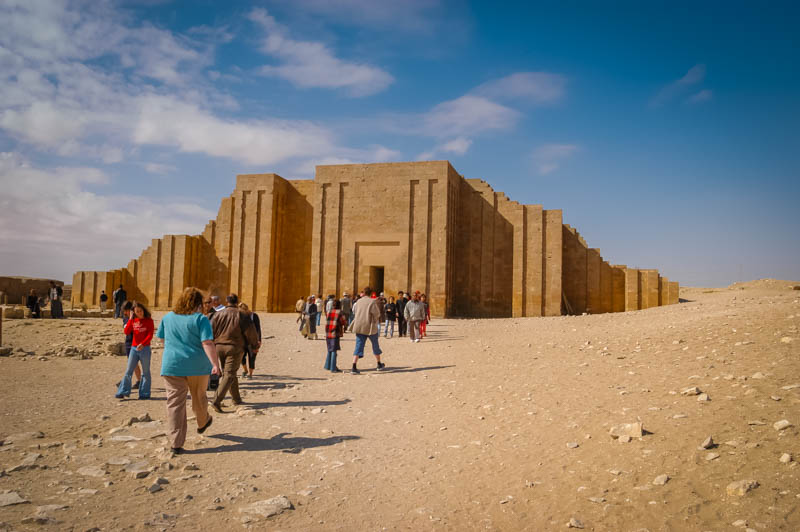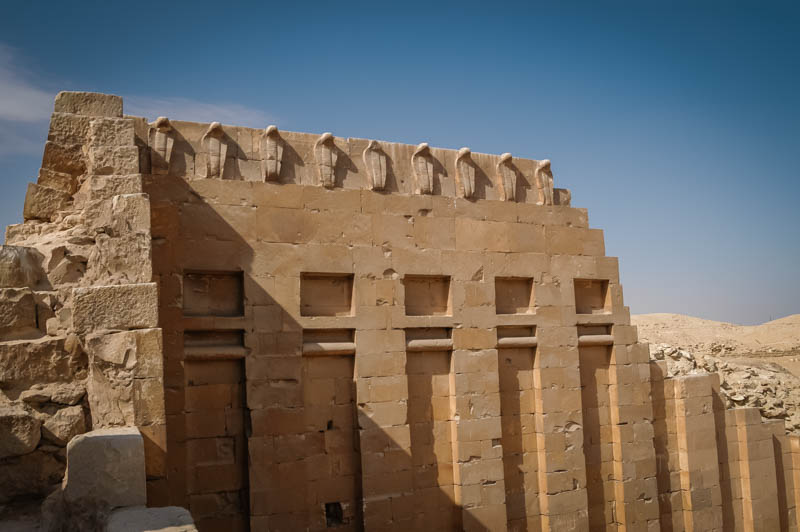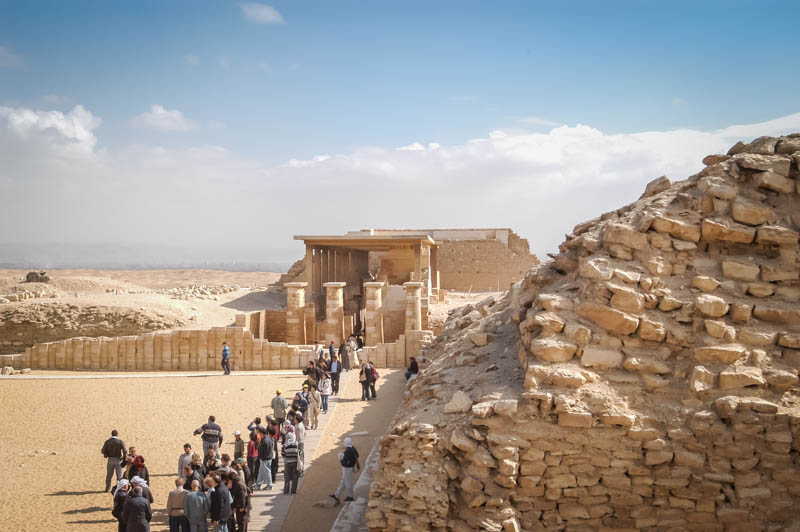
The Step Pyramid is only the most visible part of an enormous funerary complex that was oriignally surrounded by an enormous wall almost 11 meters high. It encloses a courtyard 544 meter long and 277 meters wide.it is not aligned directly north-south (although the Pyramid inside is carefully arranged to the compass points).
There are fourteen fake doors in the wall, but only one actually enters the complex. The southeastern doorway leads to the Hypostyle Hall and from there through to the open courtyard. Even inside the huge walls, false doors abound, to allow the pharaoh’s spirit (his ka) to have access to the afterlife.
The stones of the gateway are polished smooth — whether original or by the rubbing passage of thousands of tourists, we cannot tell — and open up into the great courtyard. The freize of the wall, where it remains, contains rows of cobras, a common decoration called the ureas. Most of them are destroyed, but those outside the main gate are well preserved.

The south wall contains an enormously deep pit, which is tought to be a burial place for the kings entrails, and is referred to as the Southern Tomb. The south wall also contains a frieze of the Heb-Sed Race, which is run every forty years by the pharaoh, to prove his ability to rule and his fitness for the afterlife.
Many of the buildings here are merely facades. Like all of the monuments of Egypt, every piece, every decoration is symbolic. The lotus and papyris capitals represent Upper and Lower Egypt.
South of the complex are a number of mastabas and temples, including the Pyramid of Unas, the ruined Pyramid of Sekhemkhet, and the Funerary temple of Unas. We climbed over a wall and down the stones to see the mastabas below, garnering a friendly, if overly eager guide.
